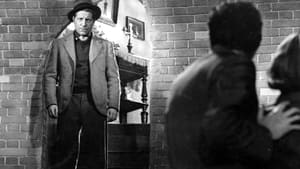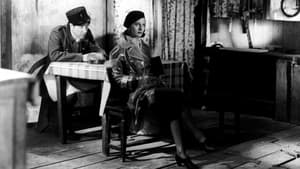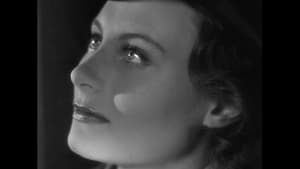Contact: info@alwanfilm.com
Video Sources 0 Views
- Watch trailer
- Port of Shadows


Synopsis
Table of Contents
ToggleReview: Port of Shadows 1938 Colorized – A Haunting Noir Classic Enriched by Early Colored Film

Introduction
“Port of Shadows” (1938) emerges as a haunting noir masterpiece, its shadowy visuals and atmospheric narrative captivating audiences since its release. In this exploration, we delve into the significance of this early colored film and its profound influence on the noir genre.
Check The Full Colorized Movies List
Check Our Colorized Movies Trailer Channel
Understanding Port of Shadows 1938 Colorized: Director, Cast, and Genre
Directed by the visionary Marcel Carné, “Port of Shadows” (1938) reflects his mastery in crafting atmospheric, emotionally resonant films. The cast includes Jean Gabin, Michel Simon, and Michèle Morgan, whose performances bring depth and complexity to their characters. Positioned within the realm of film noir, “Port of Shadows” (1938) weaves a tale of desperation, love, and betrayal against the backdrop of a fog-shrouded port town.
Exploring the World of Port of Shadows 1938 Colorized: Plot and Characters
“Port of Shadows” (1938) follows the journey of a deserter, portrayed by Jean Gabin, who finds himself entangled in the lives of desperate souls seeking refuge in the port town. His encounter with Nelly, played by Michèle Morgan, ignites a passionate and ultimately tragic romance, while the enigmatic character of Zabel, portrayed by Michel Simon, adds an air of mystery and menace to the narrative. As the characters navigate the murky waters of morality and desire, the port town becomes a metaphor for the shadows that lurk within the human soul.
The Art of Film Colorization
The art of film colorization transforms the visual landscape of classic movies, infusing them with newfound vibrancy and depth. Through meticulous digital techniques, black and white films like “Port of Shadows” (1938) are reborn in vivid color, offering viewers a fresh perspective on familiar stories and settings. In the case of “Port of Shadows” (1938), colorization enhances the film’s atmospheric qualities, immersing audiences in the haunting beauty of its noir world.
Early Colored Films: A Brief History
The history of colored films traces back to the early experiments of filmmakers seeking to add color to their creations. From hand-painted frames to early Technicolor processes, the evolution of colored film has been marked by innovation and experimentation. As technology advanced, so too did the art of colorization, leading to the development of modern digital techniques that continue to captivate audiences to this day.
Port of Shadows 1938 and Its Early Colored Version
The decision to release “Port of Shadows” (1938) in a colorized format offers audiences a fresh perspective on this noir classic. While some purists may question the authenticity of colorization, others appreciate the opportunity to experience the film in a new light. In the case of “Port of Shadows” (1938), colorization enriches the film’s visual palette, heightening its emotional impact and drawing viewers deeper into its atmospheric world.
The Debate Over Film Colorization
The debate over film colorization remains a contentious issue, with proponents praising its ability to revitalize classic movies and introduce them to new audiences, while detractors argue that it compromises the integrity of the original work. As filmmakers and audiences navigate the complexities of colorization, they are forced to confront questions of artistic intent, historical preservation, and audience engagement in an ever-evolving cinematic landscape.
Examining Port of Shadows 1938 as an Early Colored Film
The impact of colorization on “Port of Shadows” (1938) is a matter of personal interpretation, with viewers responding to its enhanced visual imagery in different ways. Some may argue that colorization detracts from the film’s noir aesthetic, while others appreciate the added depth and dimension it brings to the narrative. Regardless of one’s stance on the issue, there’s no denying the enduring power of “Port of Shadows” (1938) as a noir classic that continues to captivate audiences with its atmospheric storytelling and unforgettable characters.
Influence and Legacy: Port of Shadows 1938 Colorized’s Impact on Cinema
“Port of Shadows” (1938) has left an indelible mark on the world of cinema, inspiring generations of filmmakers with its atmospheric visuals and emotionally resonant storytelling. Its influence can be seen in countless noir classics that followed, from “The Third Man” to “Blade Runner,” each drawing inspiration from its shadowy world of moral ambiguity and existential despair. As audiences continue to rediscover “Port of Shadows” (1938), its legacy will endure for generations to come, a testament to the enduring power of cinema to illuminate the darkest corners of the human experience.
Director’s Cinematic Legacy: Beyond Port of Shadows 1938 Colorized
Marcel Carné’s legacy extends far beyond “Port of Shadows” (1938), with a body of work that continues to captivate audiences with its emotional depth and visual poetry. From “Children of Paradise” to “Le Jour Se Lève,” Carné’s films are celebrated for their atmospheric storytelling, complex characters, and haunting beauty. Through his groundbreaking work, Carné has left an indelible imprint on the world of cinema, inspiring generations of filmmakers to explore the depths of human emotion and imagination.
Themes Explored in Port of Shadows 1938 Colorized
“Port of Shadows” (1938) explores a myriad of themes, from the search for identity to the nature of love and desire. Through its haunting imagery and morally ambiguous characters, the film invites viewers to ponder the complexities of the human condition and the elusive nature of truth and redemption. As audiences immerse themselves in the world of “Port of Shadows” (1938), they are reminded of the fragility of the human soul and the enduring power of hope in the face of despair.
Reception and Controversy Surrounding Port of Shadows 1938 Colorized
Upon its release, “Port of Shadows” (1938) received critical acclaim for its atmospheric visuals, emotionally resonant performances, and evocative storytelling. However, the decision to release the film in a colorized format sparked debate among purists, reigniting the age-old discussion surrounding artistic integrity and historical preservation. Despite the controversy, “Port of Shadows” (1938) remains a beloved classic that continues to captivate audiences with its haunting beauty and timeless themes, reaffirming its status as a masterpiece of the noir genre.
Where to Watch Port of Shadows 1938 Colorized Online
For those eager to experience the haunting beauty of “Port of Shadows” (1938), the film is readily available on popular streaming platforms such as Netflix, Amazon Prime, and Hulu. Whether viewed in its original black and white format or the early colored version, “Port of Shadows” (1938) promises to transport you to a world of mystery and intrigue, where shadows dance and secrets lurk around every corner.
FAQs About Port of Shadows 1938 Colorized
Q: Is “Port of Shadows” (1938) based on a true story? A: No, “Port of Shadows” (1938) is a fictional tale crafted by screenwriter Jacques Prévert, who drew inspiration from the atmospheric settings and morally ambiguous characters of classic noir literature.
Q: Who are the main actors in “Port of Shadows” (1938)? A: “Port of Shadows” (1938) features an ensemble cast led by the iconic Jean Gabin, whose brooding performance anchors the film’s atmospheric narrative. Michel Simon and Michèle Morgan also deliver memorable performances, adding depth and complexity to their respective roles.
Q: What awards did “Port of Shadows” (1938) win? A: While “Port of Shadows” (1938) did not win any major awards, it received critical acclaim for its atmospheric visuals, emotionally resonant performances, and evocative storytelling.
Q: Why was “Port of Shadows” (1938) released in a colorized format? A: The decision to release “Port of Shadows” (1938) in color was made to introduce the film to a new generation of viewers and enhance its visual appeal for modern audiences. While the choice to colorize the film sparked debate among purists, it ultimately allowed “Port of Shadows” (1938) to reach a wider audience and ensure its continued relevance in the annals of cinematic history.
Conclusion
As we reflect on the enduring legacy of “Port of Shadows” (1938), let us celebrate its status as a noir classic that continues to captivate audiences with its haunting beauty and timeless themes. Whether viewed in its original black and white format or the early colored version, “Port of Shadows” (1938) stands as a testament to the power of cinema to evoke emotion, provoke thought, and transport us to worlds both familiar and fantastical.




















